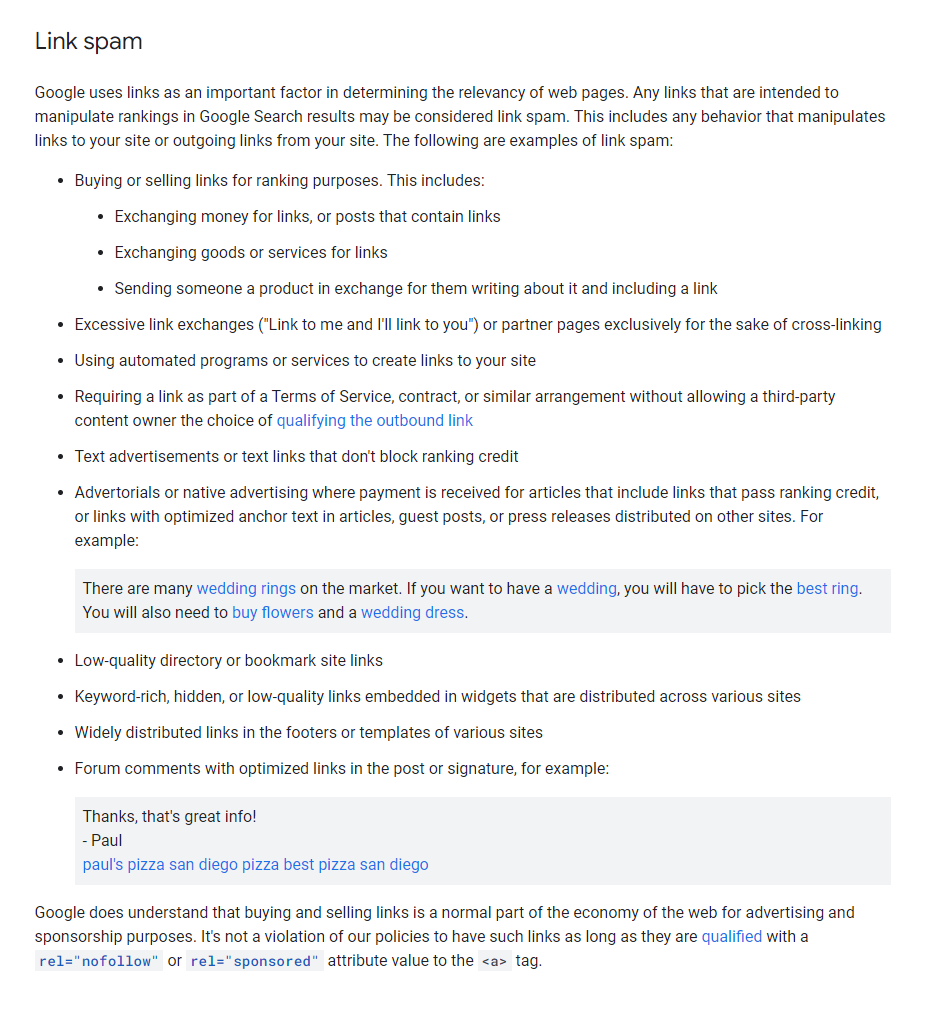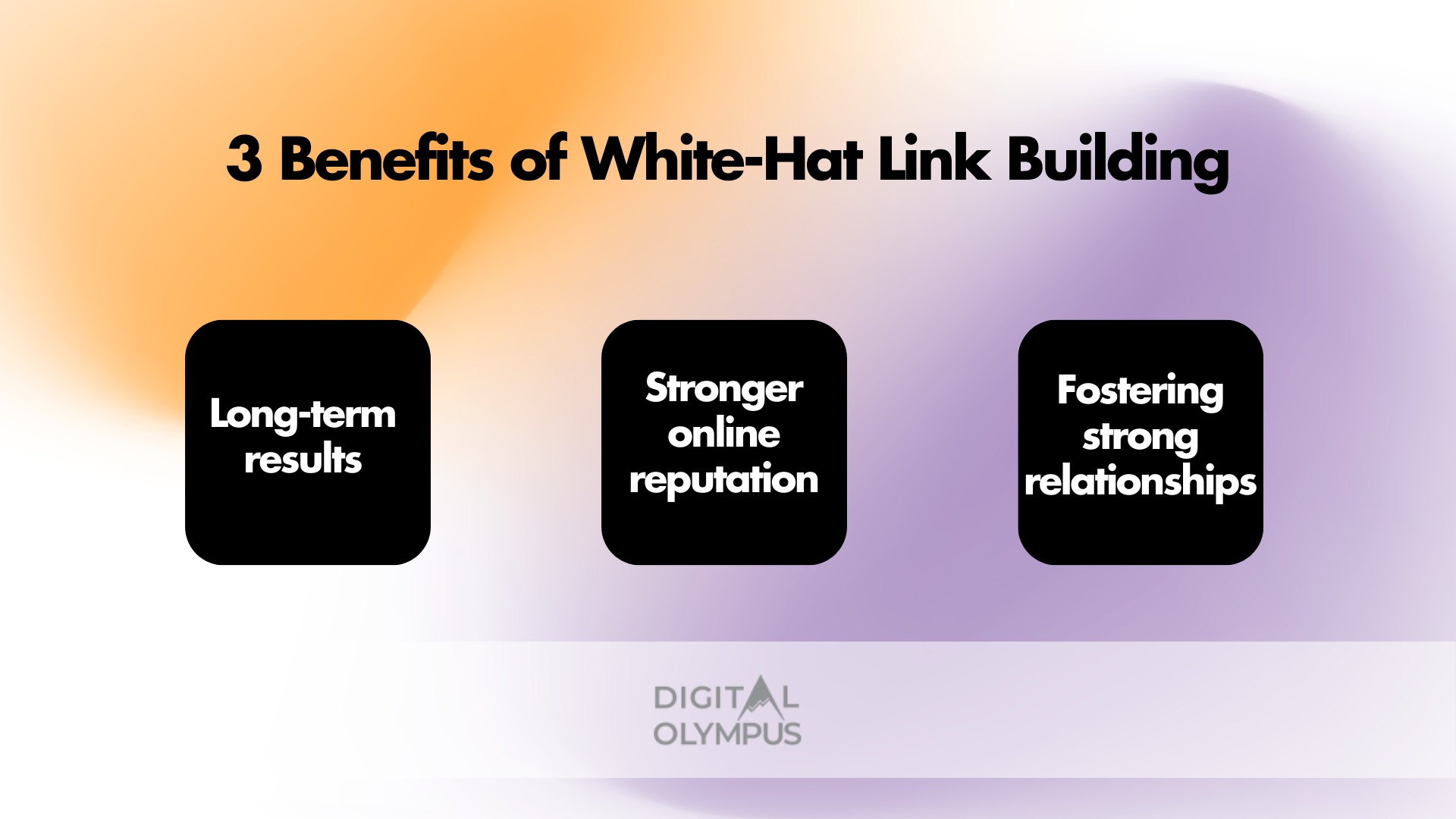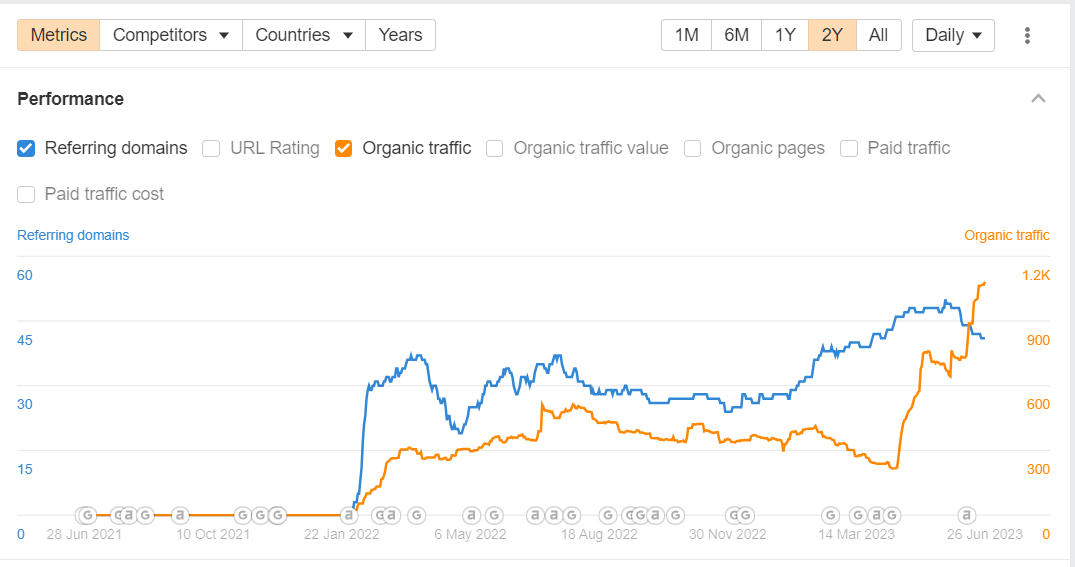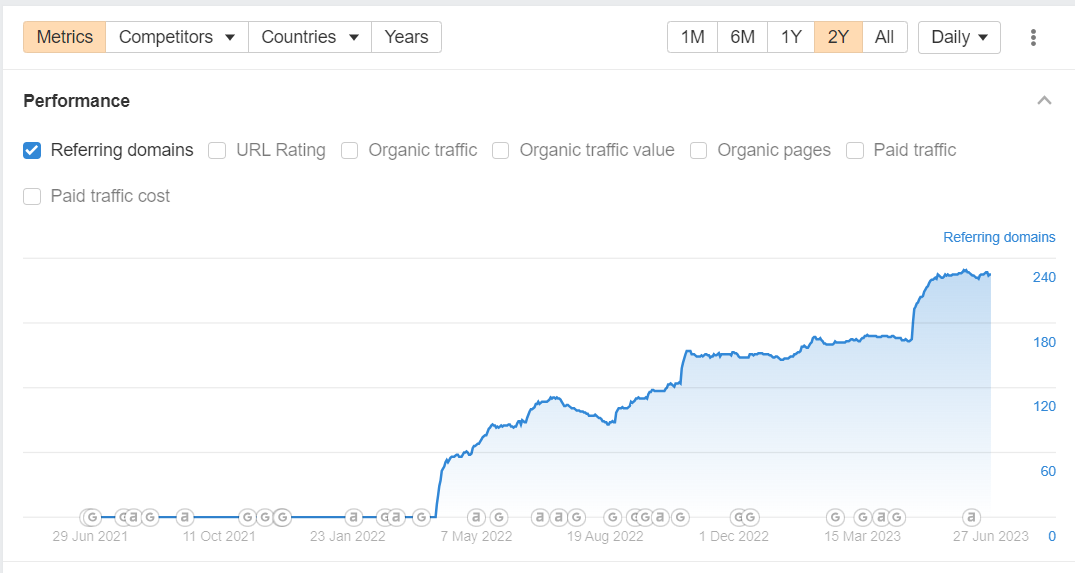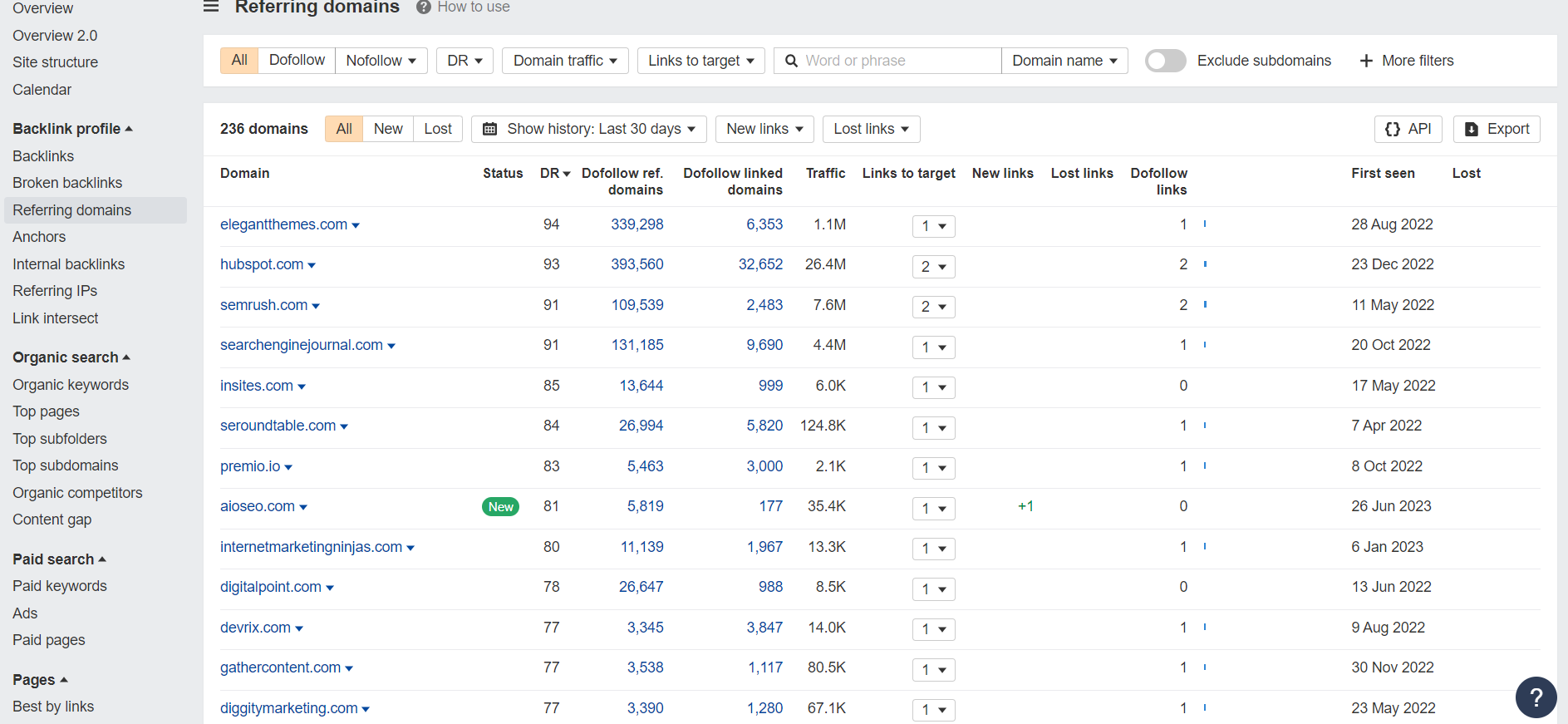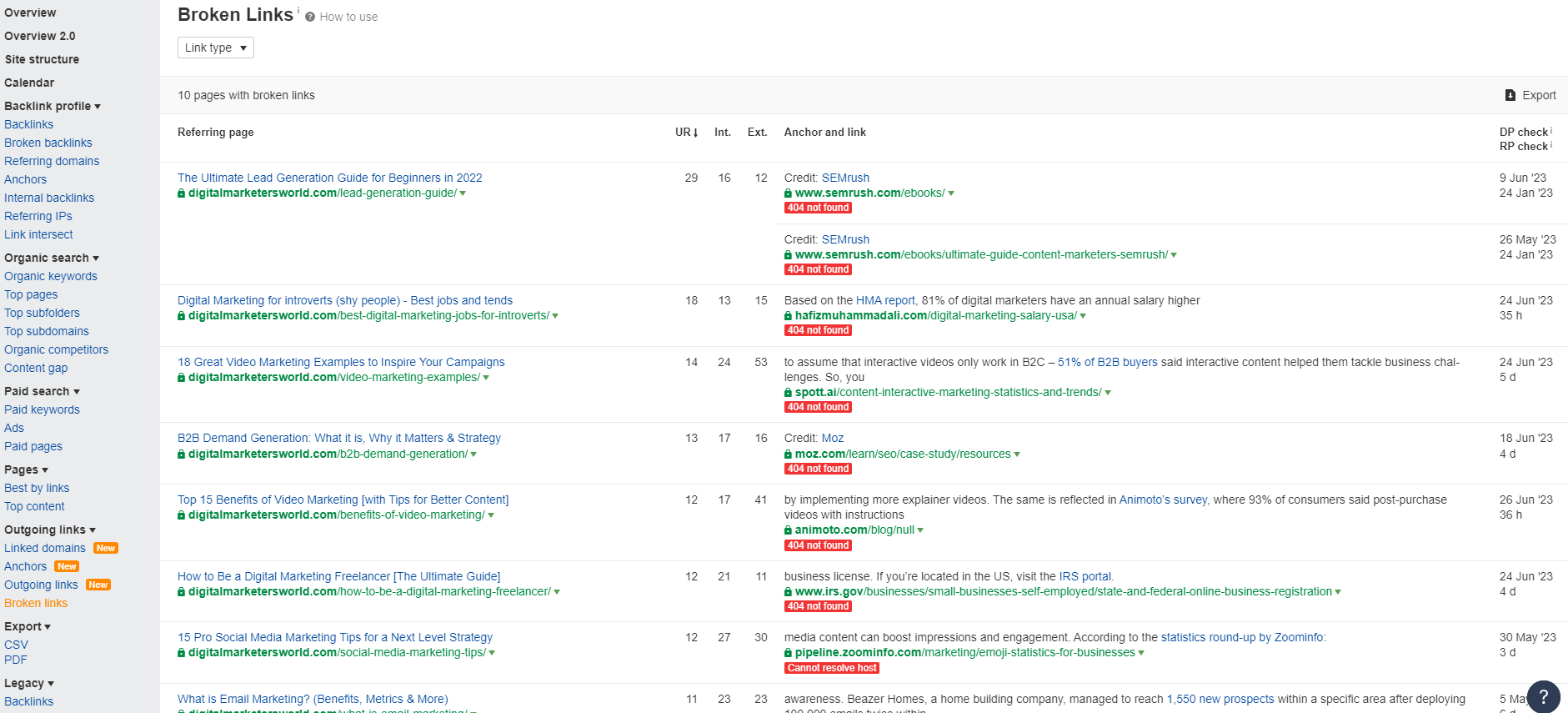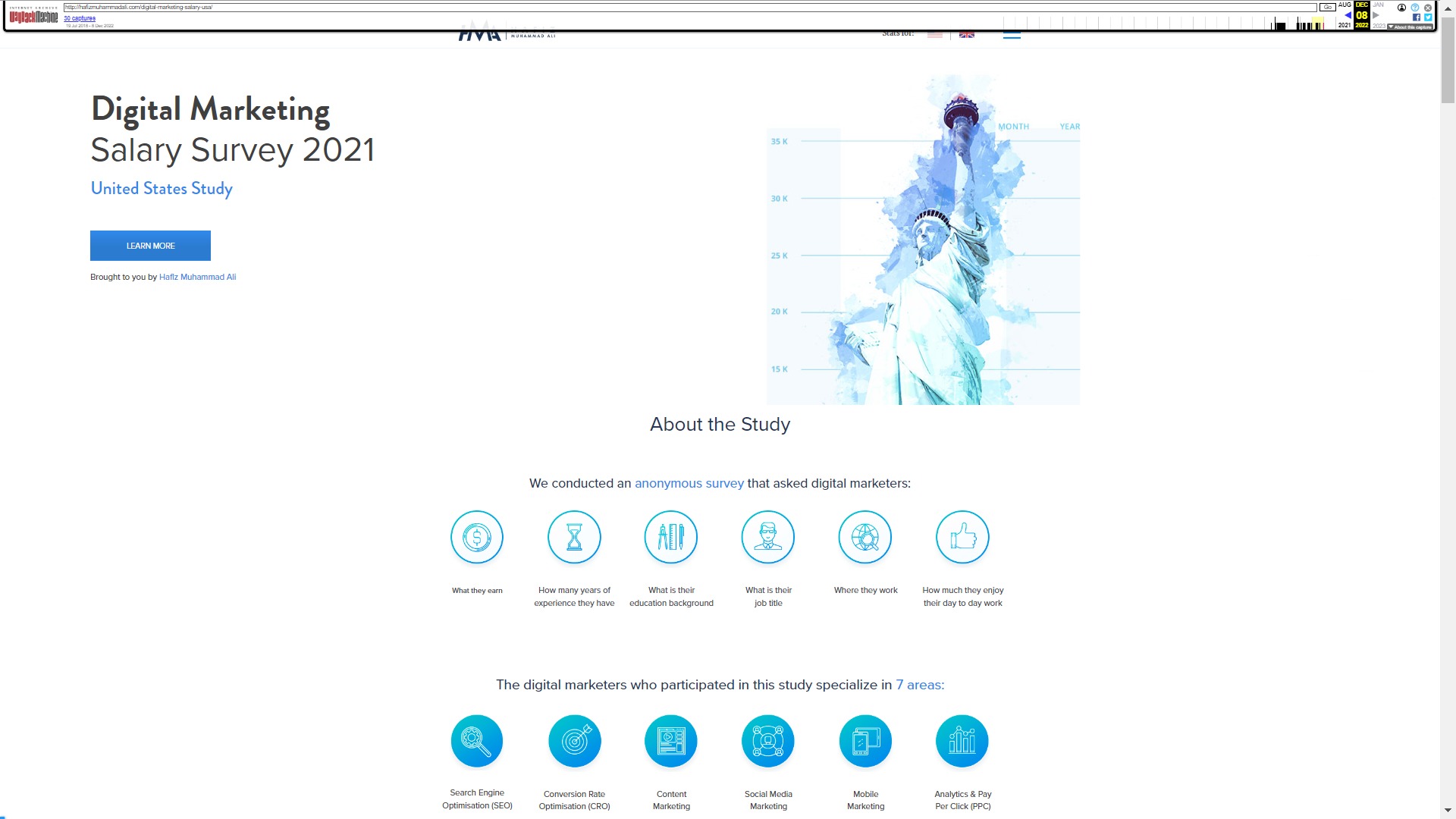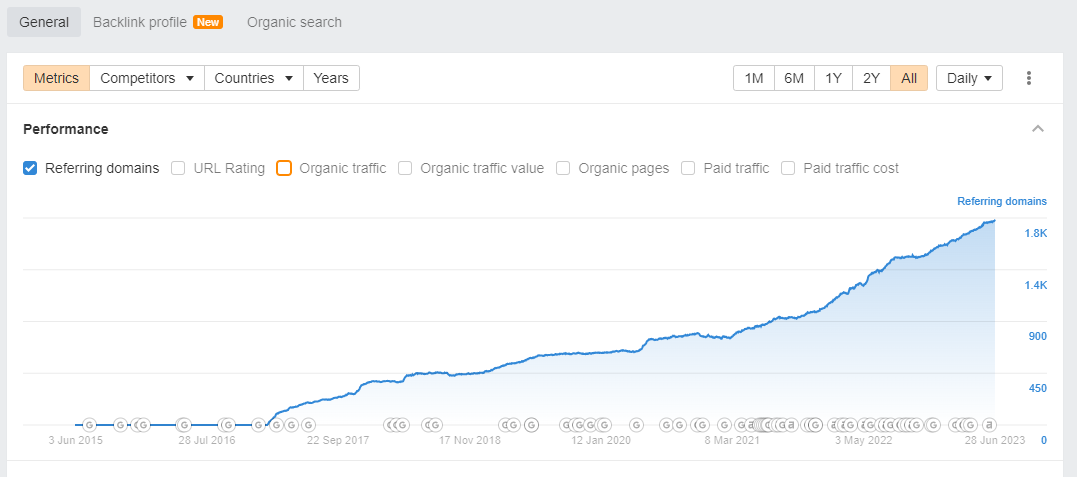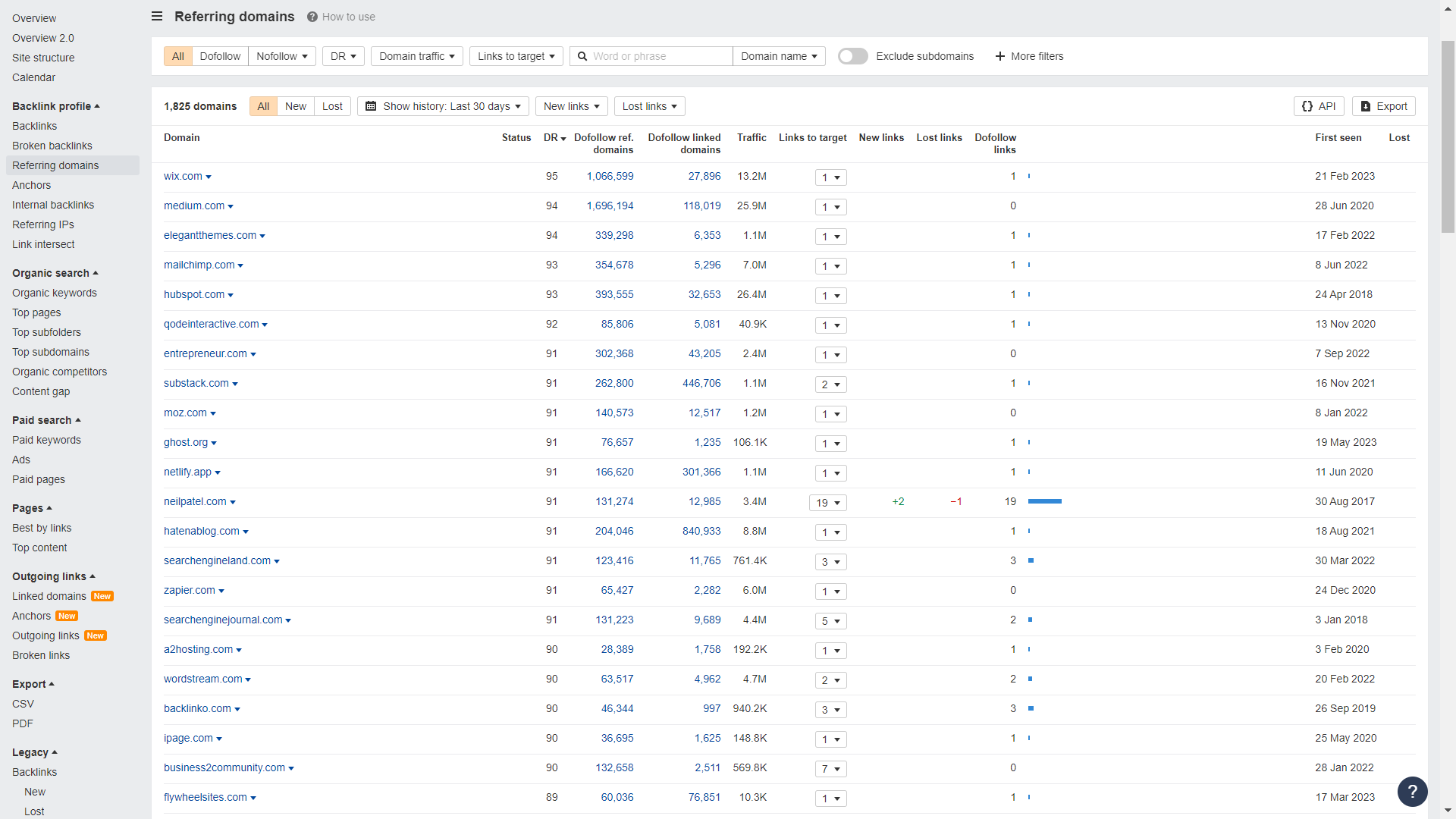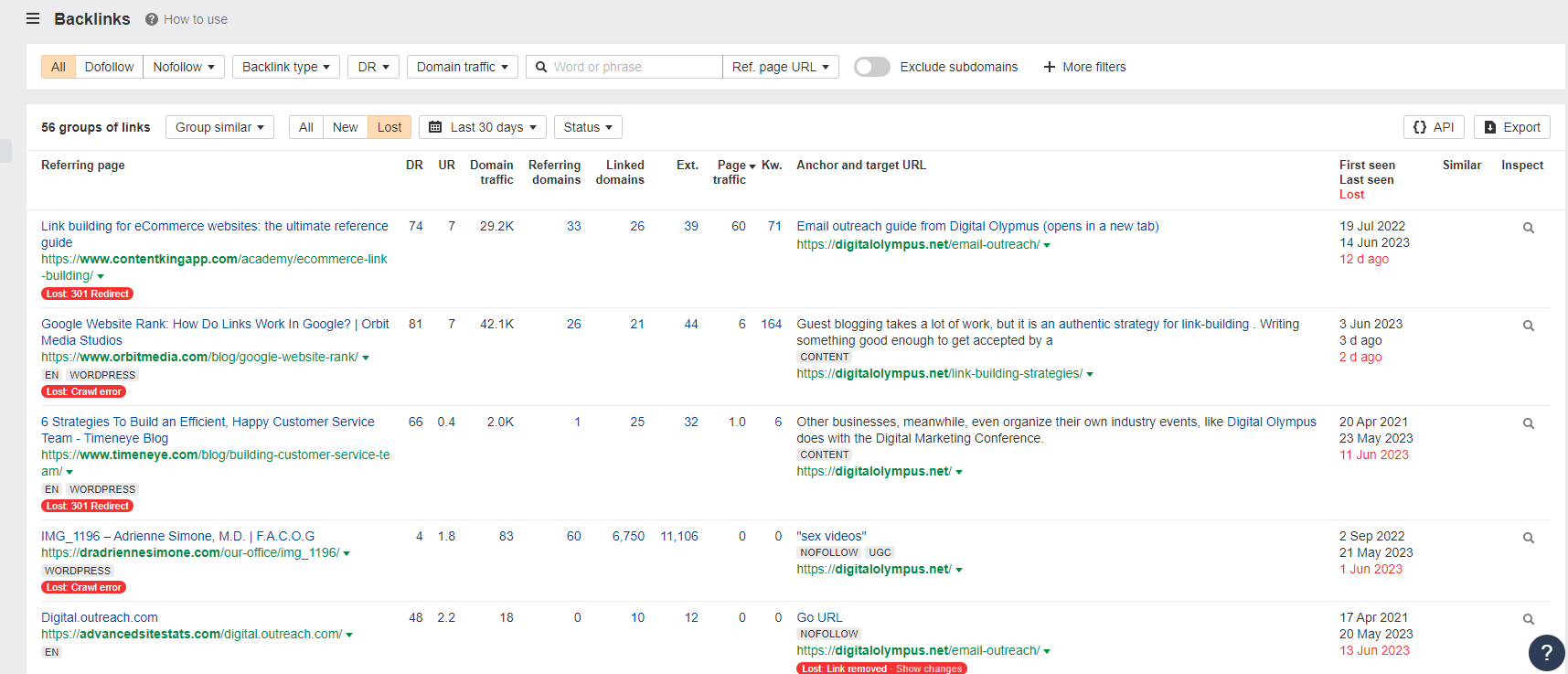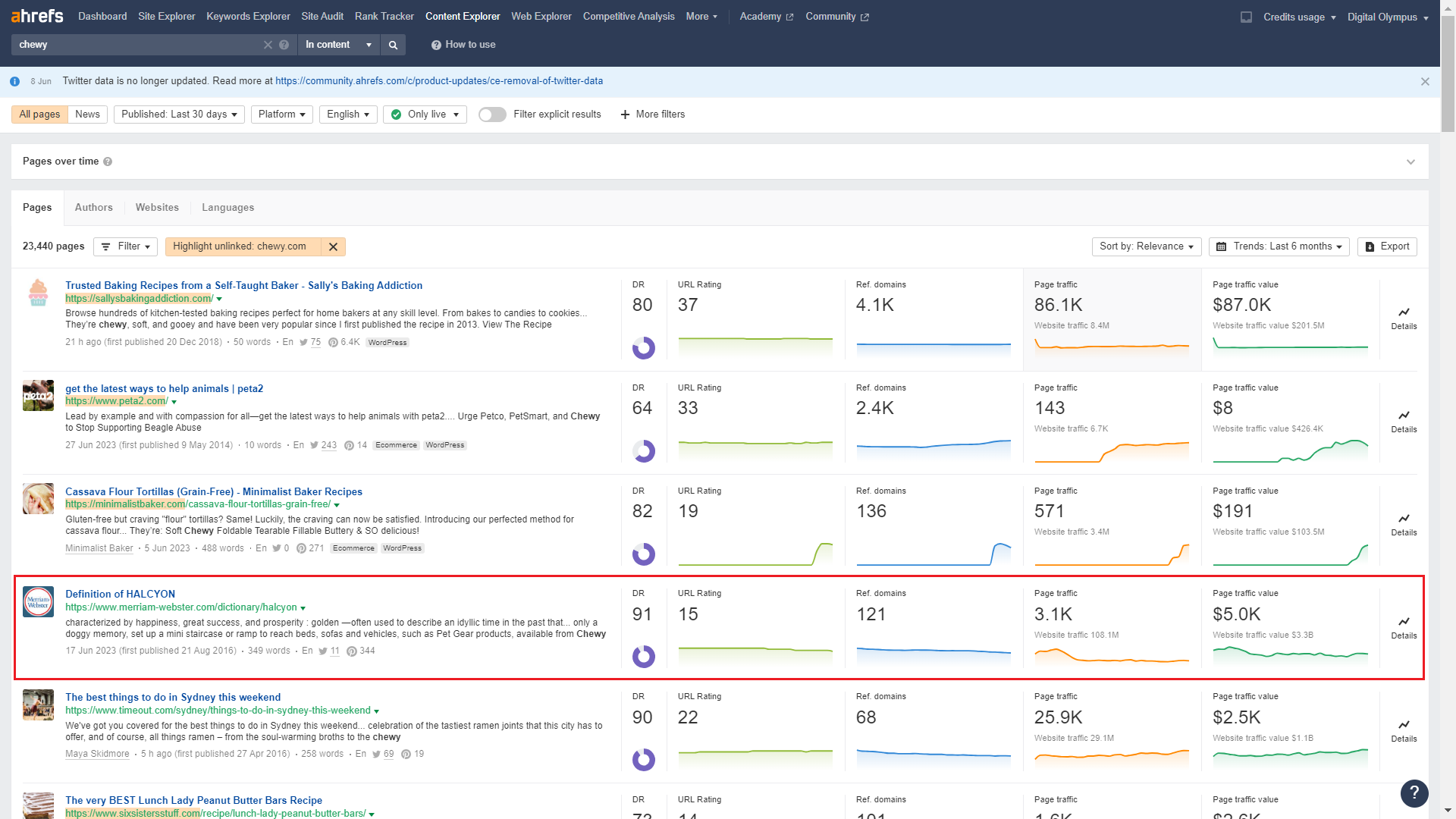Itching to buy a link or two just to gain a competitive advantage over your rivals quicker?
While it might seem a good idea in the moment, buying links or engaging in any other spammy black-hat link building strategies never works out well long-term.
But if you want to do link building right, your methodology should be in line with Google’s vision, i.e., include white-hat link building tactics.
In this guide, we will share everything you need to know about acquiring links white-hat style and reveal our most-favorite strategies.
What is White-Hat Link Building?
White-hat link building is an SEO strategy that involves organic ways of link acquisition from high-authority websites to boost traffic and gain more visibility in search engine results.
The term white-hat link building was coined as a result of the emergence of many questionable and shady SEO techniques, such as paid links and excessive link exchanges. Thus, we so the emergence of Google’s algorithm updates (like Jagger in 2005, the famous Penguin in 2011, Panda in 2013, and, more recently, Link Spam) that defined what violates its rules for link building.
List of activities Google considers as link schemes.
If a website engages in the activities mentioned in the image above, the ultimate punishment can be a manual penalty. And there’s a chance that no matter what you do, your website won’t recover from it.
So, it’s one benefit to engage in white-hat link building instead of investing in black-hat SEO, but there are definitely more. Let’s discuss them in detail.
3 Important Benefits of White-Hat Link Building
We’d say that white-hat tactics have three benefits, which are the most crucial for successful off-page SEO:
Benefits of white-hat link building.
Now, let’s break down each of them to help you understand why going for building links the white-hat way is actually the only reliable option you have.
Benefit #1: Long-term results
Yes, white-hate link building strategies take a long time to start working. However, the effects also last longer, unlike with low-quality black-hat tactics.
Let us show you.
Do you remember the case of JC Penny from 2011?
Briefly, they arranged hundreds of links with very descriptive anchor text on multiple websites unrelated to their industry. Evidently, the SEO firm that worked as the company’s contractor engaged in buying links on private blog networks, directories, and other irrelevant sites to improve JC Penny’s search rankings.
And it worked. Until the Penguin update.
Below, you can see how long the website’s traffic couldn’t properly recover and start growing (the data is from 2012 — the earliest Semrush could show):
JC Penny’s traffic trend over time - Semrush report.
This brings us to the conclusion that purchased links fix your traffic situation only temporarily.
Now, let’s consider the opposite approach — a white-hat method called relationship link building.
Right here, you can see a page that belongs to our client’s website from the B2B niche. We started actively building links to it in the third quarter of 2022 and continued doing so this year:
Growth of organic traffic resulting from relationship-based link building.
As you can see, the page survived the December Link Spam update and gained full strength after the recent Core Update. The links were acquired from relevant, high-quality websites belonging to legit brands.
If you compare both examples, you’ll see that results from black-hat link building are short-lived (almost always). However, if you invest in acquiring links from websites representing real brands with a real product or service (even if their DR isn’t as high as you’d want), over time, you’ll see tangible effects on your site’s traffic.
Benefit #2: Stronger online reputation
Do you know what’s one of the main ingredients in the success of Brian Dean’s Backlinko blog?
You might say original, great content, and you’ll be absolutely right. However, more importantly, this content’s originality also makes it a lucrative linkable asset.
But don’t take our word for it.
Let’s take Brian’s latest blog post on using reverse outreach to build links (published in April 2022). From the graph below, you can see that the number of referring domains has been continuously growing:
Growth of domains referring to the latest article on Backlinko.
If we zoom in on actual referring domains, we’ll see quite a few well-known websites with a solid presence and visibility:
Authoritative websites in the list of domains referring to Backlinko’s article.
To cut a long story short, Brian Dean wrote a unique piece of content that the SEO community finds highly valuable. Creating linkable assets like this is a white-hat link building tactic, as it allows for the natural acquisition of editorial links that deliver referral traffic.
From a bigger perspective, as you produce more of such content, it strengthens your reputation, increases trust, including from Google, since backlinks from high-authority sites are a strong vote of confidence.
Moreover, it adds to the possibility of future collaboration opportunities with other brands within your industry, which we’ll talk about next.
Benefit #3: Foster strong relationships
As a relationship-based link building agency, we vouch for this approach, and here’s why.
Whenever we get a new client, let’s say, in the SaaS industry, it’s not always necessary to start the link acquisition process to their website through cold email outreach. Instead, we actively use the resources with which we’ve built strong relationships over time.
This helps us ensure our client gets high-quality, relevant links in their backlink profile.
Here’s an example of a few links we built to a client’s page in February-March 2023 using relationship-based link building:
Links acquired through the relationship-based link building approach.
Like all other white-hat techniques, the relationship-based method takes time to work, and cold email outreach in the first stages of forming relationships is inevitable.
Yet, none of the other approaches can compare to the long-term effect of this tactic, not to mention the positive impact on your reputation.
White-Hat vs. Black-Hat Link Building
The main difference between white-hat and black-hat link building is that the first aligns with Google guidelines, whereas the second one doesn’t.
People engage in black-hat tactics simply to get the effect sooner rather than later. In such instances, they don’t really care about the long-term impact. Their key interest is in getting results as quickly as possible, mainly through using the following strategies:
- Buying links
- Excessive link exchanges
- Using automated programs that generate links
With the white-hat method, your investment in link building time- and effort-wise will be more substantial. This approach requires extensive work on both on-page SEO and off-page SEO sides, which would guarantee that the final result meets your expectations.
While we’re on the topic, we can’t omit grey-hat link building.
Grey-hat approach is a type of link building that involves both white-hat and black-hat techniques, approximately with a 70%-30% ratio in favor of white-hat SEO techniques. However, this approach also aims for temporary rather than long-term results and manipulates search engine results pages.
10 White Hat Link Building Techniques to Consider
Now that you know the basics about white-hat backlink acquisition, let’s turn to practice.
We’ve compiled a list of ten practices you can mix and match to create a successful link building strategy with long-term tangible results. Let’s dive in!
Technique #1: HARO
HARO (Help a Reporter Out) is one of the most reliable ways to get into white-hat link building, as it both helps you find relevant sources of high-quality links and build relationships.
Essentially, once you sign up, the website serves you with queries from journalists three times a day, from Monday to Friday. Here’s an example of a HARO email:
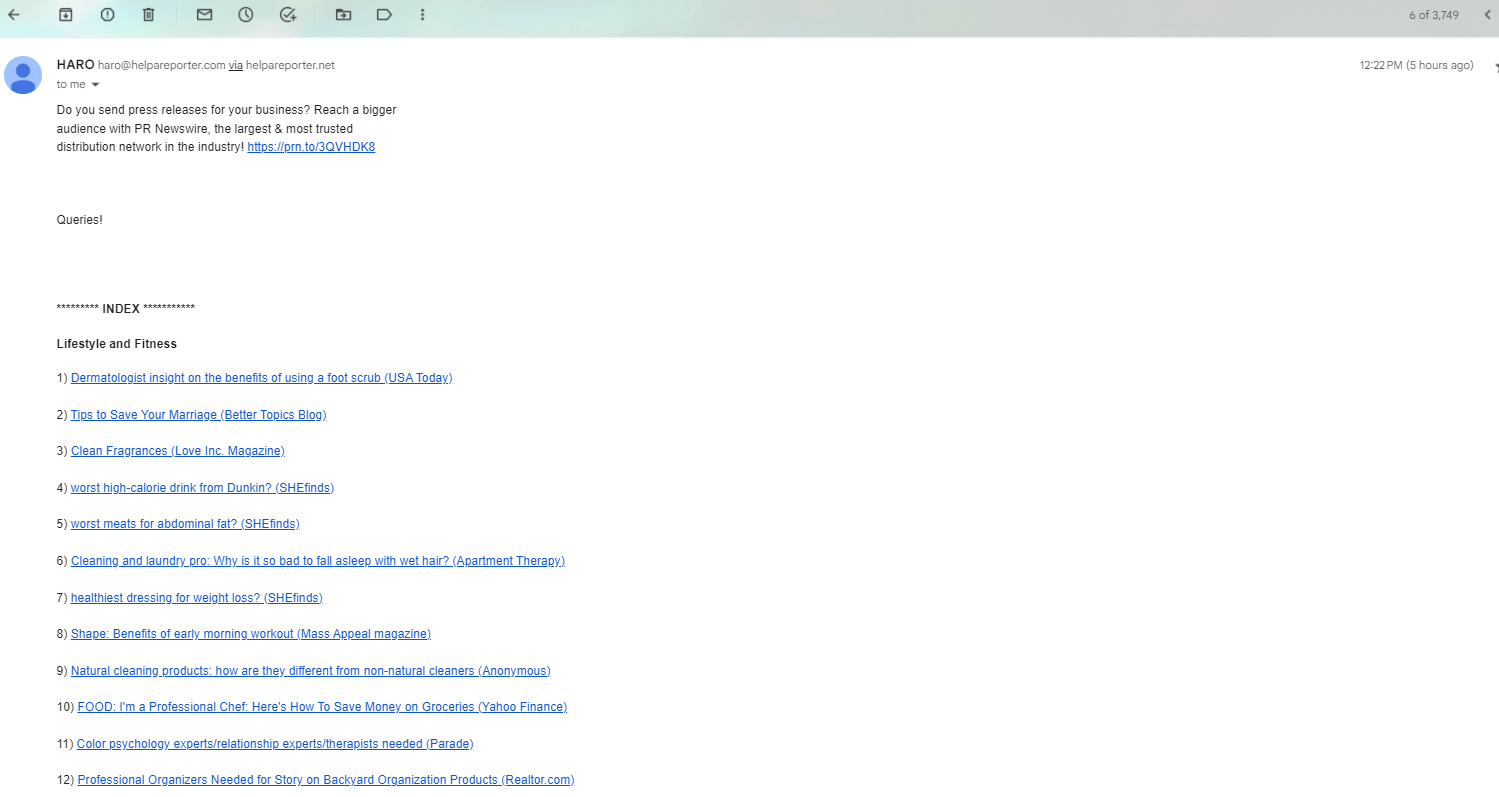
Email with queries from HARO.
?Tip: If you find most queries irrelevant, visit your account and choose the industries you are interested in.
So, once you receive the email, what do you do with it?
Here are some further tips:
- Look for journalist queries that match your expertise and align with your website’s industry and niche;
- When crafting your response to a query, always make sure to comply with the journalist’s inquiries;
- Always be prompt when sending your reply (most queries have a deadline).
Here are more recommendations on how to craft a winning query response:
First off, ot’s crucial to tailor your response creatively to encompass your relevant credentials and experiences that align with the context of the query. By doing so, you can demonstrate your expertise and establish yourself as a credible source. Think of it as an opportunity to showcase your unique perspective and insights.
To make your response stand out, avoid the common mistakes that many people make. For instance, steer clear of sending one-line pitches or answers. Instead, take the time to provide a detailed and thoughtful response that adds value to the journalist’s request.
Another important aspect is timeliness. Journalists receive numerous pitches, and they may have tight deadlines to meet. So, try your best to respond promptly. If you respond too late, there’s a chance they may have already gathered enough quotes or moved on to other sources. - Christopher Panteli, Co-Founder of Linkifi.
Finally, HARO also lets you interact with bloggers, influencers, and journalists directly as you submit your response — this is your queue to build relationships with them. The more you do it, the more recurring link building opportunities you will get. Not to mention that it will broaden your circle of connections.
Technique #2: Find Broken Links and Pitch Your Content
Broken link building involves looking for the web pages that return a 404 code or don’t open. If you spot such a link, it’s your sign to jump in and use it as a link building opportunity.
Yep, it’s 100% ethical. In a way, you’ll be doing a website with a broken link a favor.
The problem, of course, is finding these opportunities in the first place — it’s like looking for a needle in the haystack. But there are some ways you can hack it.
When doing the prospecting, the easiest solution is to go to Ahrefs' Outgoing Links report and pick Broken Links — it will show you all 404 pages a website links to:
Ahrefs' Broken Links report.
So, you’ve harvested your broken links, what’s next?
It’s time to investigate the content on a page that returned the 404 code. You can use the Wayback Machine archive to retrieve the page and analyze the topic it covered.
For instance, here’s what we were able to get when looking up one of the broken links from the report above:
Content from the 404 page retrieved from Wayback Machine.
Evidently, this was a report from an anonymous survey with original data on salaries in digital marketing in 2021. Thus, your next steps would be pretty straightforward: you can either create a similar piece of content or get the one you already have and pitch it to the referring website to include instead.
The trick, of course, is to make sure you offer original, fresh, and relevant content, which could take time and effort. But for starters, you can just look for opportunities to pitch the content you already have while working on something more grandiose.
Technique #3: Write Guest Posts
Link builders have a love-hate relationship with guest posts and seem to go to extremes with this approach from time to time.
Essentially, they either go overboard with building links through guest posts or ban them from their strategy altogether.
But what does Google say?
To make a long story short, the search engine tells us to stay moderate with guest blogging. However, it also says that it does not discourage it:
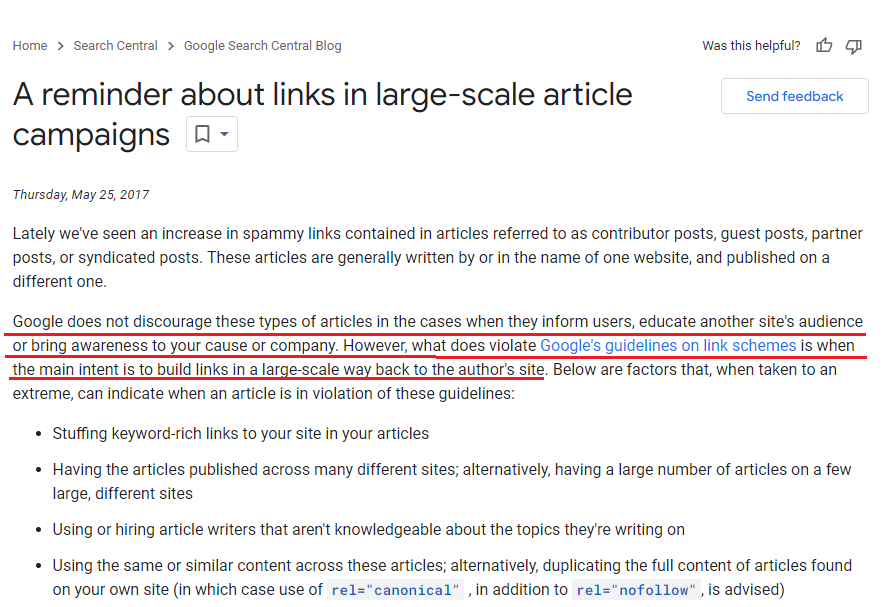
Google’s policy regarding guest posts.
If we sum up the information above, we’d say Google wants guest posts to:
- Deliver real value
- Be unique
- Showcase authority and expertise
Now, it’s clear it’s hardly possible for anyone to deliver such high-quality content at scale. And, if you outsource this task to an agency or hire knowledgeable experts, this strategy will quickly turn into a black-hat one.
So, in precis, invest in guest posts, but they shouldn’t be the main source of your links.
Nearly every guest post outreach I receive includes the same content: something positive about my blog, the title of their proposed piece, and a CTA for the next steps. What helped me land more opportunities was including more details, such as an outline of my proposed post, a list of internal links that could be included, and a brief explanation of how my post fills a gap in their content strategy. Yes, this is time-consuming — but it’s work I save the receiver, which makes it easier for them to say «yes». — David Ramos, SEO Product Manager & Senior SEO Analyst at AAA.
Technique #4: Create Linkable Assets
A linkable asset is a high-quality piece of content that includes unique information and exclusive insights. Therefore, it prompts people to share it across their channels and link to it, making such content a backlink magnet.
Linkable assets bear specific characteristics.
As Kevin Rowe wrote in his article for SEJ, such content should display a clear application of the E-E-A-T ranking factors, crucial for search engine optimization:
- Expertise — sharing the author’s knowledge of the subject matter.
- Experience — showcasing the author’s firsthand experience of the topic.
- Authority — establishing the author’s reputation and credibility.
- Trustworthiness — demonstrating that the author is transparent.
In terms of article ideas, many content marketing pieces can possess these features: listicles, statistics posts, infographics, case studies, templates, checklists, etc.
Here we have an in-depth research study by Ahrefs — one of their most-linked-to content pieces. Naturally, it has a continuous inflow of new referring domains and high-quality backlinks, even though it dates back to 2017.
How Long Does It Take to Rank in Google? (A Study by Ahrefs) — growth of referring domains.
The list of referring domains is also quite impressive:
Referring domains report for Ahrefs' research study.
But much like with guest posts, linkable assets are hard to create at scale. Yet, if you do invest in them, they will bring you tangible results in the long run (Ahrefs' example proves that).
?P.S. We just had Kevin Rowe as a guest for our SERPs of the Week podcast. So, make sure to check it out!
Technique #5: Write Testimonials for Brands
Reviews and testimonials have a significant impact on the brand’s online presence.
The summary of BrightLocal’s 2023 Local Consumer Review Survey has shown that the more reviews a business gets, the better its reputation. Moreover, more positive reviews can help a business rank higher in organic search — Jeff Riddall came to this assumption when analyzing Semrush’s study of the Local Pack for over 5K businesses.
Now, you can easily use this for your benefit, and it’s absolutely legal from Google’s point of view.
All you have to do is create a list of tools your company uses, distribute it across your colleagues, and ask them to write testimonials, one review per tool. Next, you can contact the brands owning these tools and offer them these testimonials in exchange for a link from their testimonial page.
?P.S. Make sure not to overuse it, though. If you go berserk with this strategy, Google will recognize the pattern and disregard these links in the best-case scenario.
Technique #6: Consider Link Reclamation
If you are familiar with link building, then you must have been annoyed by this situation at least once:
Ahrefs' Lost Links report.
However, it’s very easy to turn this situation to your benefit.
You can always reclaim lost links by contacting the webmaster and negotiating to insert your links on a different page relevant to yours.
Here’s a trick, though — it’s important to figure out why you lost the link in the first place. The problem might be on your side of things, so check that first before going to the website owner to ask how to mend the situation.
Technique #7: Try Digital PR
Digital PR is a strategy aiming to improve your brand’s online presence. Its main task is to create a buzz around your brand’s name.
Essentially, the key idea is to come up with something newsworthy about your business and share it with a bunch of publications through journalists. And yes, you’ll be getting a link from the website, but it’s not the same as link building.
The objectives of digital PR mostly blend with media coverage. Link building, however, aims to help you gain more visibility in Google search and has other goals, such as increasing website traffic, besides improving your visibility.
Why is digital PR a part of white-hat SEO?
It’s simple — this approach focuses on sharing a story about your brand via legit local, national, or international publications, which in no way manipulates Google’s guidelines. It just would be quite hard to create newsworthy brand stories at scale.
It also won’t be easy for your competitors to replicate these links. And that’s another good reason to do digital PR.
Technique #8: Reach out for Unlinked Brand Mentions
An unlinked brand mention is a situation where a publication mentions your brand’s name without linking to your website.
Claiming unlinked brand mentions is a white-hat and a completely ethical way to build backlinks. Essentially, the link has already happened organically, and all you have to do now is to ask the website owner to link back to you.
Now, how to find unlinked brand mentions?
Here are some easy steps:
- Use Ahrefs Content Explorer
- Choose where you want the tool to find a brand mention
- Add your brand’s name
- Set the time period and choose Only Live
- Enter your domain name in the Highlight Unlinked tab
Unclaimed brand mentions report from Ahrefs.
Next, you need to review your findings and pick the best options in terms of domain authority, organic traffic, relevance, and credibility. That should leave you with a list of websites you can contact and ask to add a backlink to your website under your brand name.
?Tip: This strategy is great if you want to build extra links to your homepage.
Technique #9: Use Podcasts for Link Building
Podcast link building entails pitching yourself as a guest to different podcasts within your niche and industry and getting a link from an episode page.
We do that for our SERPs of the Week podcast guests:
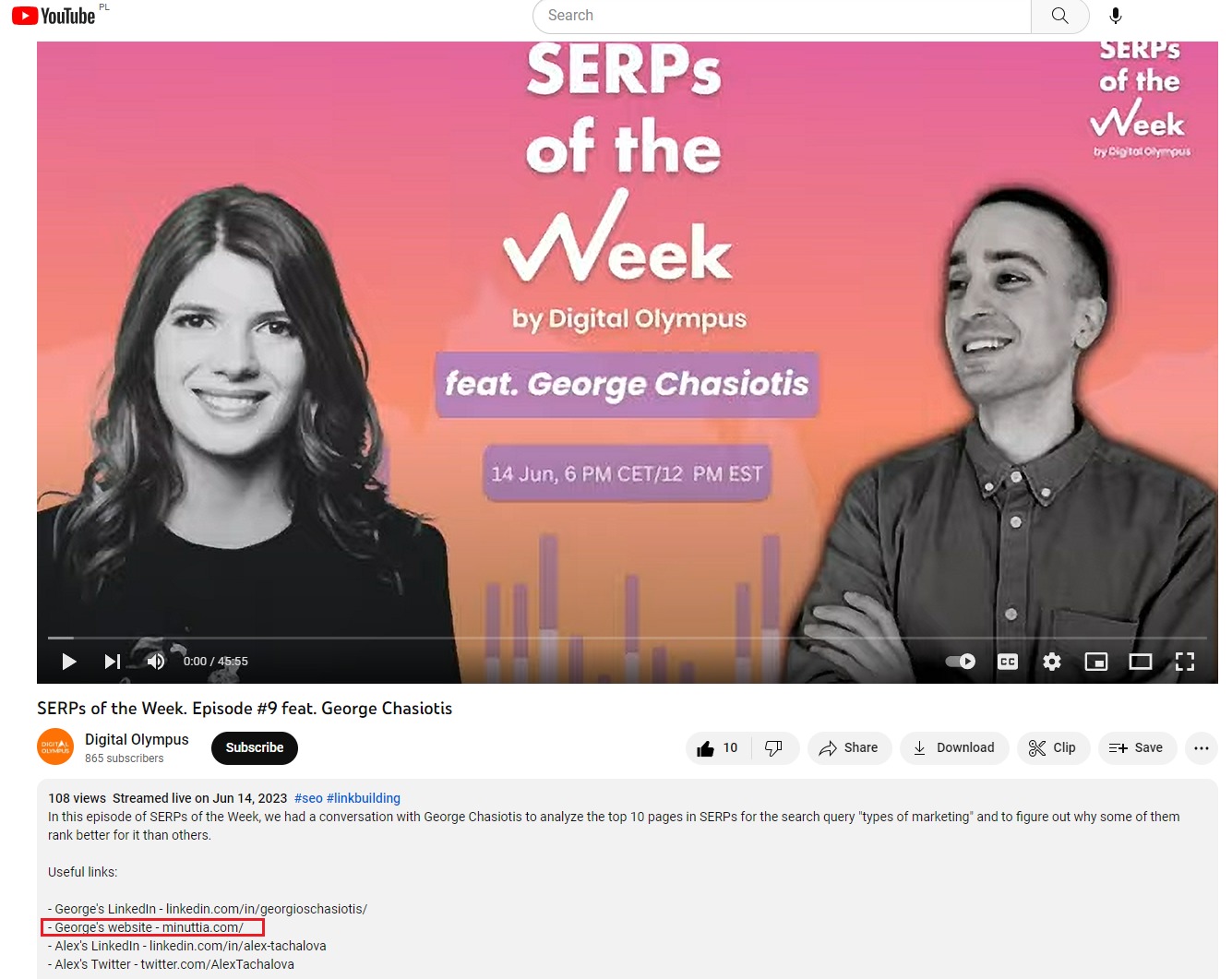
Link to the guest’s website in the podcast description.
This approach is great if you want to improve your homepage’s visibility through organic links, and these backlinks look credible in Google’s eyes since they are placed in the content where you share your expert opinion.
A positive side effect of this method is that you will also get a chance to boost brand awareness. And you can also use this opportunity to build relationships with other players in your industry and use those connections in your link building campaigns.
Technique #10: Try Content Contribution
Finally, it’s always a good idea to actively contribute to industry communities, social media groups, do blog commenting, etc. It’s a chance to not only earn a link but also demonstrate your thought leadership skills and get your name recognized.
Now, to find the sources where you can contribute content, our best bet is always to be active on LinkedIn and watch where others from your industry share their opinions.
Using your connections is another way to go. That’s actually how we found an opportunity to meet and interact with the Superpath community on Slack:
Our promotion via Superpath’s Slack community.
However, we advise you to carefully choose the pages you’d like to promote. Make sure to provide valuable content, so it’s a good idea to research the source, check out what people often ask about, and make your contribution along those lines.
Over to You
At Digital Olympus, we encourage everyone not to indulge in quick fixes for quick and easy results. Practice shows that such an attitude will lead you nowhere, and the possibilities are high that you will lose the website you worked so hard on.
Moving forward, white-hat link building strategies will gradually become the only way to build good links acceptable according to Google’s standards. Moreover, building links white-hat style ensures the imminent growth of your website visibility.
Our link builders only employ white-hat link building services to help our clients get higher in search engine rankings. Contact our team to learn more about our process and success stories!



